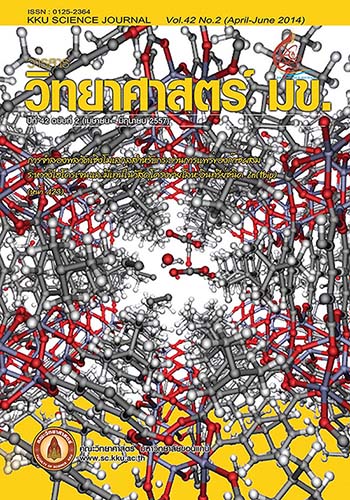Microbial Air Contamination in Laboratory Rooms, Faculty of Science, Payap University
Main Article Content
Abstract
A study of the types and amount of airborne micro-organisms that cause allergies and infections found in six laboratories in the Faculty of Science, Payap University was carried out. A settle plate method was used to collect airborne microbes in a four-week period between January to February 2012. Samples were taken each day, in the morning and early afternoon. The results showed that the average amount of bacteria in the morning in the six rooms were in a range between 10.1 to 93.1 CFU/plate/h. By the afternoon they were between 4.9 to 63.9 CFU/plate/h. The average amount of fungus in the morning samples was between 32.1 to 87.0 CFU/plate/h and by the afternoon in the range between 17.1 to 76.3 CFU/plate/h. The average microbial count in the morning samples was higher than the afternoon. Comparison with The Index of Microbial Air Contamination (IMA) found average levels in the six rooms were very good to very poor. Six types of airborne pathogens were found: Bacillus sp. appeared the most, followed by Staphylococcus aureus and gram-negative rods, respectively. The greatest number of fungi was Penicillium sp. followed by Aspergillus sp. and Curvularia sp., respectively. We also found the allergy causing fungus Cladosporium sp. in high-volume in the laboratories. It was found that the relationship between the amount of bacteria and fungi in all the six laboratories were different with statistical significance (p<0.05). The relationship between the number of microorganisms in the air at different times in the morning and afternoon also found a statistically significant difference (p<0.05).
Article Details

This work is licensed under a Creative Commons Attribution-NonCommercial-NoDerivatives 4.0 International License.


